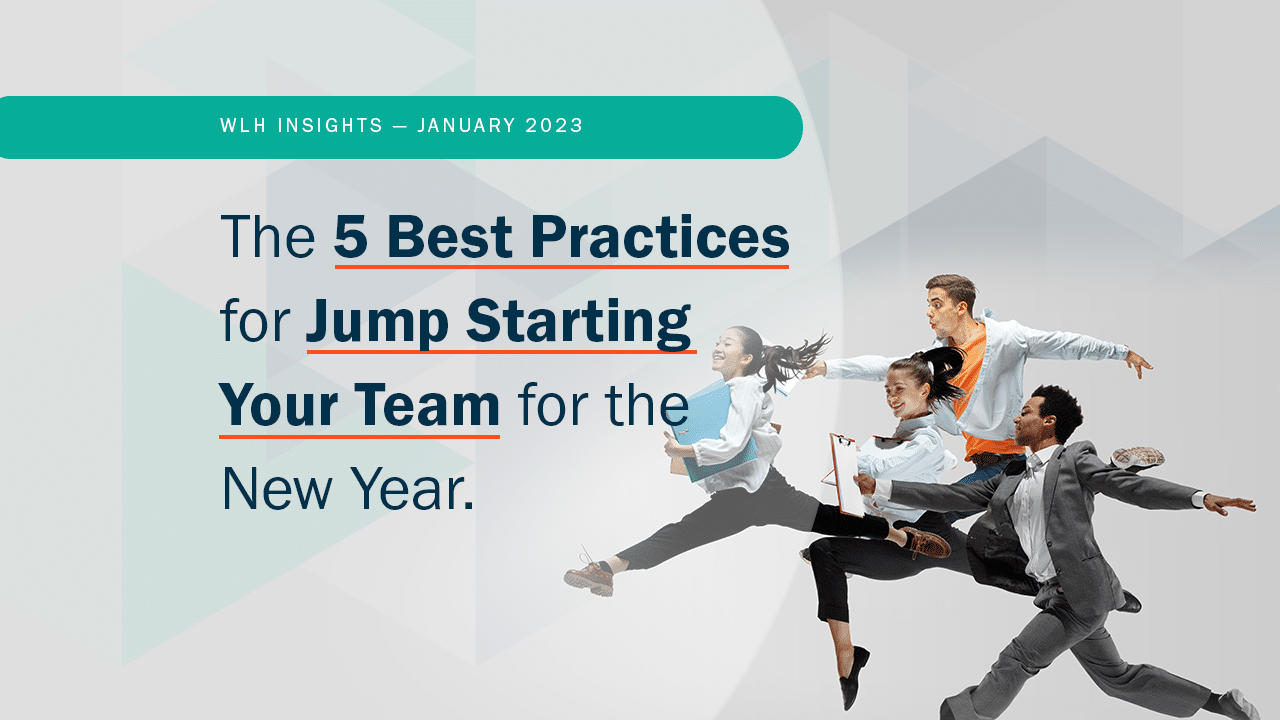As the new year kicks-off, it is a good time to reset your teams with a Jump Start meeting. The purpose of the Jump Start is for the team to reflect upon last year, align on the coming year’s priorities, and revisit ways of working. The meeting can be done either live or virtually depending on team member locations, with either method producing the desired results if the purpose and agenda are clear. When building out the agenda for a team jump start, it is important to dedicate time for the following activities and discussions:
- Reflect on last year!
Before going forward, it is helpful to look back at the previous year. Dedicate time to discuss what worked and constructive opportunities for the team to identify mistakes and lessons learned. When evaluating what worked, explore the successes that can be built upon going forward, determine where the team went above and beyond to achieve goals, and acknowledge each other for individual contributions and successes. When reflecting on the past, think about where the team struggled or missed an important goal. Take the time to identify what needs to be incorporated into any plan or ways of working going forward. - Revisit Organizational Vision, Mission, and Values
Sometimes in the course of busy day-to-day operations, a team loses site of the bigger organizational vision and mission. Take the time to review your company’s vision and mission to rediscover the “why” behind the work and where the team fits in. Simply reconnecting with the bigger picture ignites opportunities for how the team can work together to realize the vision and live organizational values daily. - Align on Priorities
Each year, broader company strategies and priorities change. A Team Jump Start provides an opportunity to review the priorities outlined through a goal setting and operating plan process. Translating these plans and gaining alignment is done through discussion where the team has an opportunity to understand the broader goals and explore how working together contributes to achieving results. Here is a great opportunity to discuss potential barriers and put in place mitigation plans and any other agreements needed that foster agility, quick pivots, and redirection of resources. - Focus on Team Effectiveness
How a team accomplishes goals is just as important as what it accomplishes. Taking time to revisit how work was achieved can be helpful to determine if processes can be streamlined that save time, money, and personal energy. Going forward, it is helpful to clarify roles and responsibilities and how team members will work together. A Rules of Engagement exercise that looks at work procedures, communication processes, decision making approaches, and how to address conflict can help the team stay on track, achieve results, and avoid any issues that chip away at engagement or jeopardize personal relationships. - Make it personal
As the Team Jump Start meeting nears closing, it is important that each team member make a personal commitment. It is a best practice for each team member to declare, in one sentence, what they will do to contribute to team success. These statements should be short and focused by using prompts, “You can count on me for … or I’m committed to being/doing.” Someone should record the comments and send them out to everyone. It is helpful to revisit these comments at future meetings or use them as gentle reminders when people slip into unproductive behaviors. Not mentioned in the five steps, but central to any Team Jump Start, is taking the time to incorporate icebreakers or opportunities for people’s authentic selves to shine through. Remember, we spend a lot of time with our co-workers and any effort to making that time more fun, joyful, and easy-going contributes to higher engagement and reduces retention risks.
Talk with us — we’re ready to help!
If you are a manager and looking for a complete Team Jump Start toolkit or support, please feel free to reach out. Our learning solution and toolkit includes a sample agenda, steps for preparing and conducting the meeting, activities with clear step-by-step facilitation guidelines, and adaptable meeting slides.
